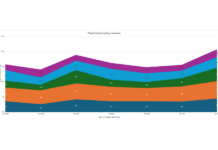Emerging markets have offered a strong opportunity for yield in recent years, albeit with greater credit risk and FX volatility, however getting access to markets has been challenging. There has been increased electronification in the Chinese markets through Bond Connect, the system of mutual market access between China and Hong Kong.
By the end of August 2019, Bond Connect reported it had onboarded 1,244 investors, up from 503 investors at the end of 2018. Total trading volume rose to RMB 338.6 billion in August 2019 from RMB 172.2 billion in June. Both Bloomberg and market operator Tradeweb offer access to the Bond Connect platform for investors.
The addition of trading for derivatives and repurchase agreements (repo) have been mooted, which are expected to increase liquidity further; trading derivatives more broadly in the EM space has continued to be challenging, which impacts overlay strategies and choices around hedging.

“I would say there is continual frustration at the lack of EM clearable swaps we can trade electronically, with banks really slow to set up on Tradeweb,” notes Stephanie Suriyanon, senior trader at Baillie Gifford. “There has been good news from Symphony, who are going to partner with FlexTrade with a solution to electronify the voice workflow for interest rate swaps.”
Chinese bonds have been added to the Bloomberg Barclays Global Aggregate Index since April 2019 and the level is being phased in gradually in order to support issuers of index-based products acquiring the relevant instruments. That is boosting liquidity as passive managers tracking the funds increase their purchases and rebalancing against the index component changes.
However, dealing in cash EM instruments elsewhere is proving tough in parts. In Q4 2018 analyst firms Greenwich Associates found that 70% of US investors are trading emerging market fixed income products electronically, primarily in hard currency.
There has been some consolidation in the space. Following the acquisition of embonds, a European multilateral trading facility (MTF), by BGC in May 2018, EM platform Liquidity Finance and Seaport Global Holdings announced plans to merge in August 2019.
The two have formed a strategic partnership with a view to merging the businesses during the latter half of 2020. Faisal Mian, managing partner of Liquidity Finance, will lead the combined Emerging Markets team, working closely with Michael Meyer, Seaport global partner and global head of sales and trading.
Seaport reports an average trading volume of US$135 billion per year in fixed income credit with over 1,800 active accounts. Liquidity Finance’s team of has traded in excess of US$200 billion across 3,500 different securities during their tenure.
“Combining our efforts in EM will enable us to do a much better job with our clients and to continue to attract and expand our world class sales and trading talent to build a best in class bond trading franchise”, said Mian.
One senior fixed income dealer observed, “EM liquidity is particularly challenging, so it will be interesting to see if people think new portals, like certain auctions that have been launched, will be embraced by the buy-side and form a larger part of the way EM is traded, including voice and existing e-platforms, for example.”
©The DESK 2019
©Markets Media Europe 2025




















